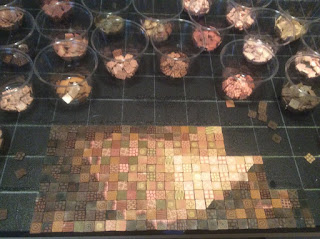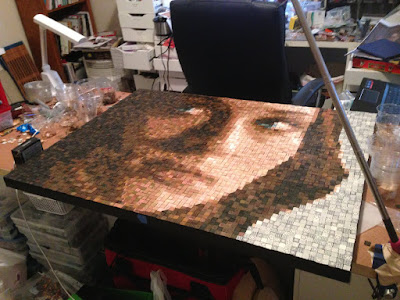Happy New Year everyone. It is hard to believe that it is 2015. I think it is a good sign that it seems the years go by so fast. I can remember back in school when an hour took forever. (And I was one of those kids that actually liked school) This is the time of year that I apologize for not posting more and promise to do better in the future. Hmmm.....sorry about that. I also said I was going to lose weight and that has happened either. Oh well that is history lets move forward.
I am happy to report that I will be teaching at Maureen Carlson's artist retreat in Jordan Minnesota this June. (Click
here to go to Maureen's website) I will be teaching two classes, a landscape caning class (3 days June 10 - 13) and a framed pendant class (2 days June 15 - 17). This may be the last year that Maureen will have artists coming to her studio so I thank her for letting me have this opportunity. The class size at Maureen's are small which makes it a fabulous opportunity for learning. You should check out her
classes and definitely go if you get a chance. If not my class then one of the others she has offered. I plan on taking Diane Keeler's Alice In Wonderland doll class.
I enjoy teaching and I wish I did it more often. I have taught my face cane class several times and have been one of instructors at Donna Kato's Clay Carnival in Las Vegas. These are different categories of classes. The face cane class I consider a master caning class. It can be done in two to three days but this is an intense class for the experienced caner. Clay Carnival is for all experience levels and usually a four hour class.
For the post today I thought I'd take you thru my process of coming up with a new class to teach at Maureen's. Maureen and I had talked briefly about it and thought a landscape class would be a good idea. I have taken a lot of classes and continue to take classes. I am of the thought that the best class gives you a good foundation to take home and then build on what you have learned. Generally not a project oriented class. Now if you know me you know that finishing things is not my strong point so that is probably where this opinion comes from. Designing a good class is an art unto itself. My friend
Jana Roberts Benzon is particularly good at this. She is constantly coming up with new techniques, designs and projects.
For this new class I knew I wanted to make a landscape and I knew it needed to involve cane work. My first thought was to make four canes of the seasons. I drew up a sketch and started working on the first "winter" cane.
OK this is where the problems start. I wanted this class to be for all skill levels. After completing the "spring" cane I knew that this class wasn't going to work. It was just too difficult. I liked the canes and I hope students would too but I didn't want frustrated students. I also felt that it wasn't as good a "foundation" as it was a project. Guess it was back to the drawing board.
My sister and I went to Euro Clay Carnival which was held in Madrid, Spain. We toured the country a little prior to carnival. I was inspired by the landscapes with the rolling hills covered with olive trees. I could see each hill as a different cane. I took this inspiration and decided to build a cane that was made up of other canes. Here is the cane I built for the class.
For this class students will learn to build several canes. We will discuss some of the elements that go into making successful landscape components so that they can create more once they return home. We will talk about color, design, depth, texture, perceived movement and feeling, size and scale.


For the two day class I will teach my framed pendant class. If students stay for both they may want to use the landscape cane that they just finished so I came up with this pendant. Students will create many canes for this class too. Here the topics will be more on what goes into the best micro canes. These canes will be reduced very small. I will teach my "brainless" cane that is very easy to do but can give stunning results. Color themes will be up to the students. I have found that starting with a blue and white palette is a great way to not fret over color selection and concentrate on design. These "delft" patterned pieces are beautiful. Here are some of the pieces I have created with my "framed pendant" technique.
I hope to see you in Minnesota!

























































